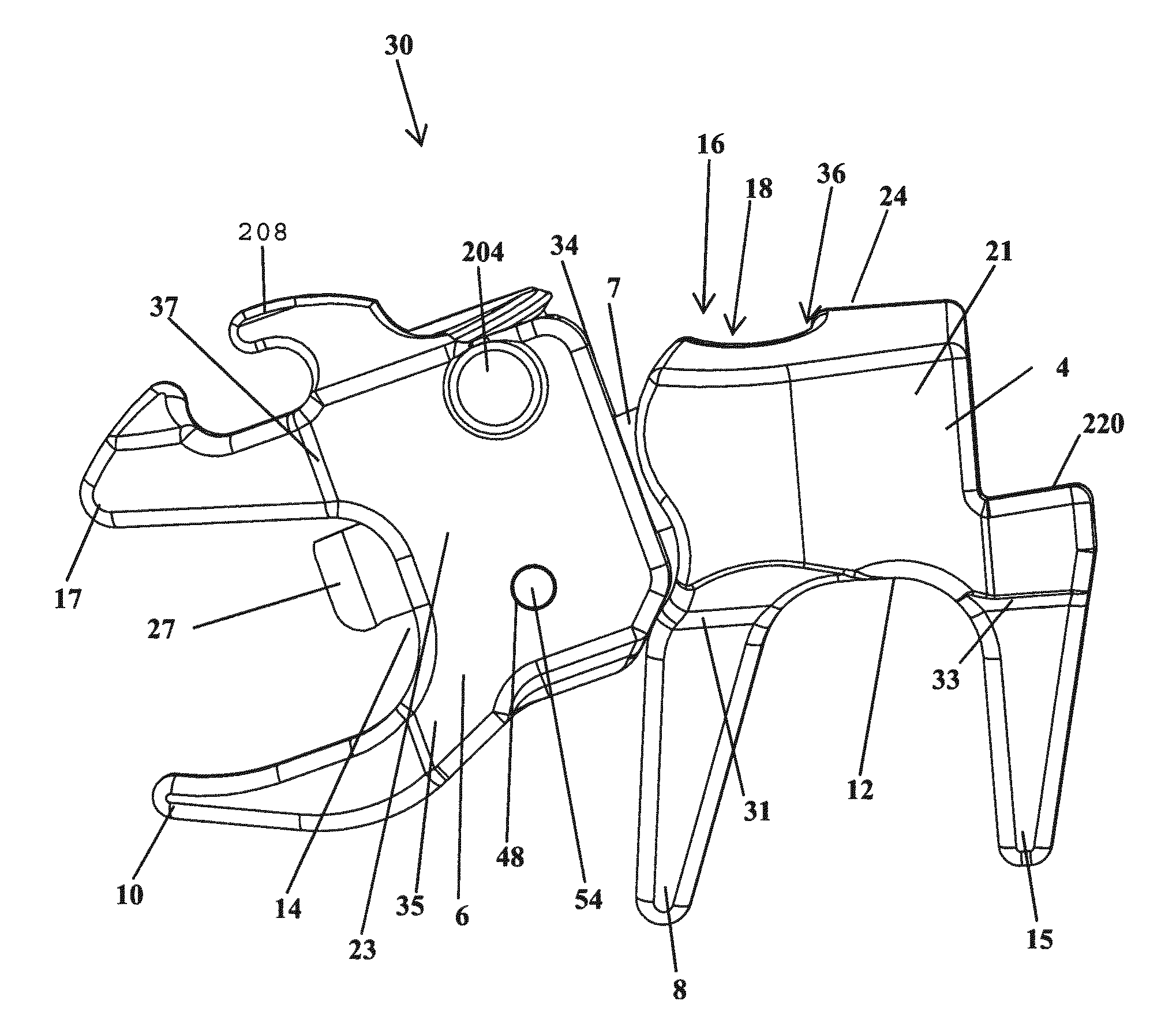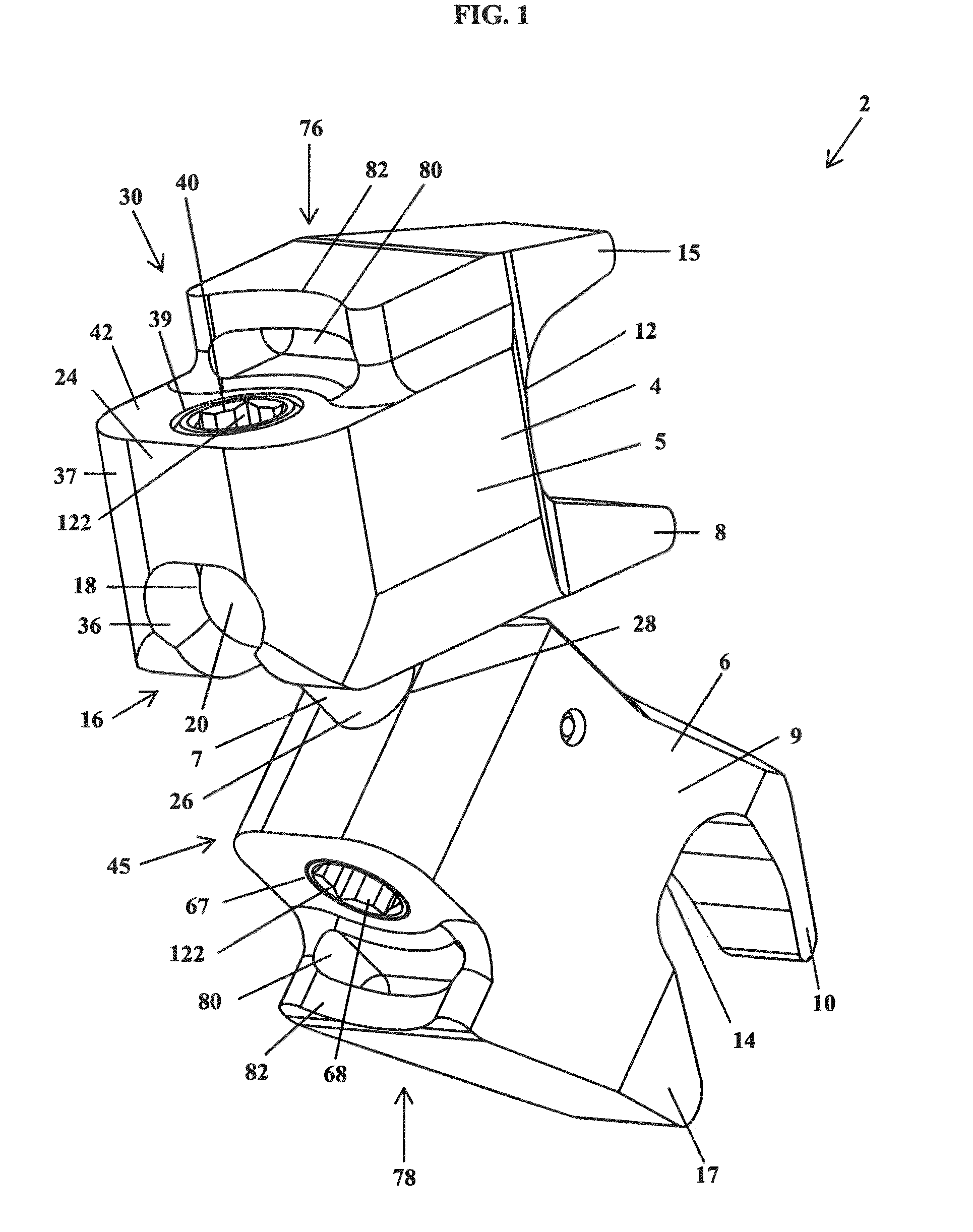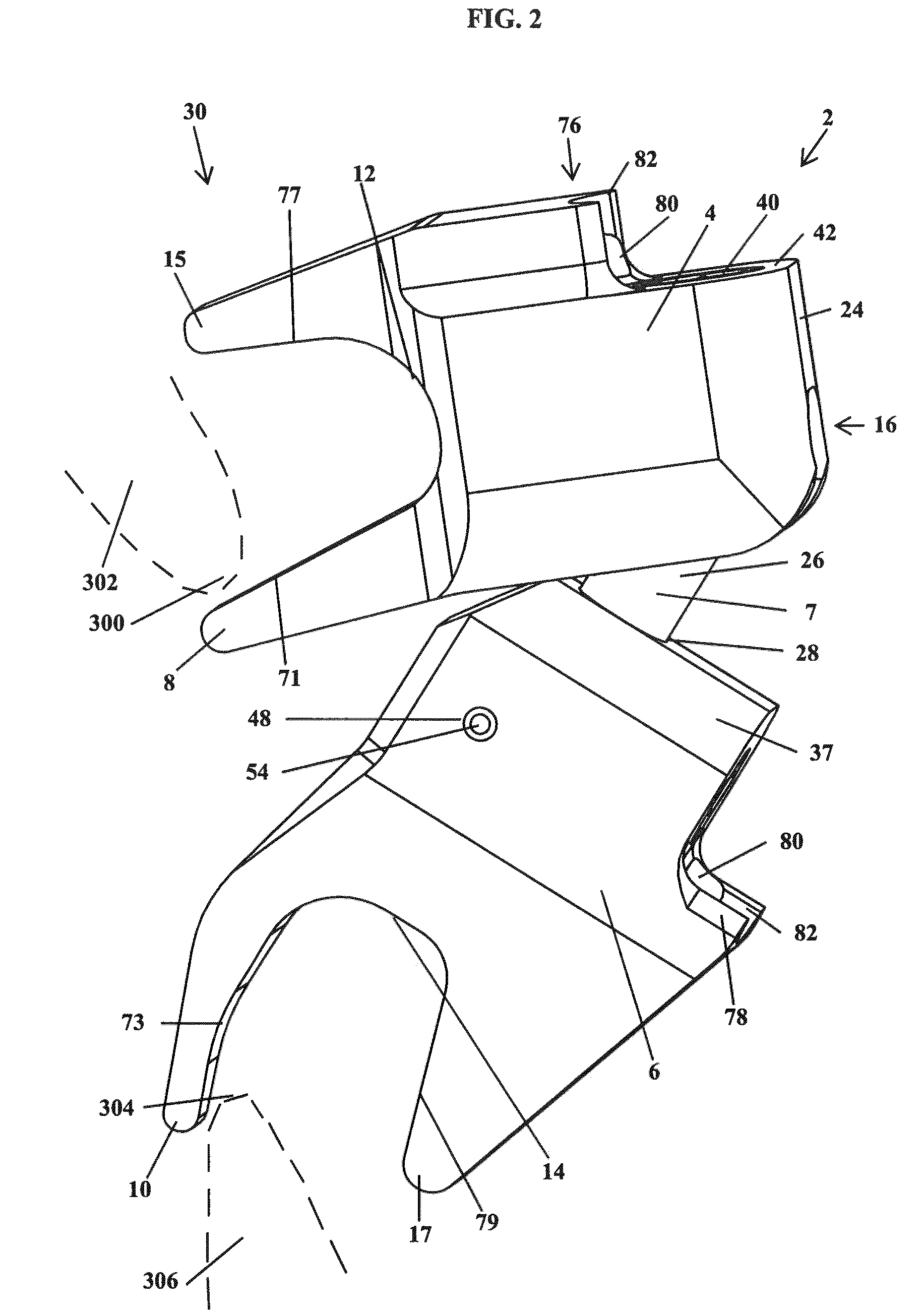Intervertebral implant devices and methods for insertion thereof
a technology of intervertebral implants and hook devices, which is applied in the field of spinal stabilization systems, can solve the problems of not allowing for variable distraction of laminar surfaces from each other, and achieve the effects of convenient assembly of hook devices, advantageous engagement, and convenient removal
- Summary
- Abstract
- Description
- Claims
- Application Information
AI Technical Summary
Benefits of technology
Problems solved by technology
Method used
Image
Examples
Embodiment Construction
[0050]In FIGS. 1-11 and 25-30, a spinal implant device or assembly 2 is shown for being implanted between and variably distracting adjacent vertebral bodies of the human spine, and more specifically the laminae of the adjacent upper and lower vertebrae. The implant device 2 includes an upper or superior hook portion or device 1 for engaging a lower surface 300 of a superior lamina 302, a lower or inferior hook portion or device 3 for engaging an upper surface 304 of an inferior lamina 306, and an elongate guide portion or device 7 connected to each of the upper hook device 1 and the lower hook device 3, as shown in FIGS. 2, 4 and 6. The superior and inferior hook devices 4 and 6 are adjustable relative to the elongate guide device 7 and to each other so that the implant device 2 can be securely engaged between the adjacent upper and lower lamina 302 and 306 substantially irrespective of their geometries relative to each other.
[0051]As shown in FIGS. 1-4 and 25-29, the upper and lowe...
PUM
 Login to View More
Login to View More Abstract
Description
Claims
Application Information
 Login to View More
Login to View More - R&D
- Intellectual Property
- Life Sciences
- Materials
- Tech Scout
- Unparalleled Data Quality
- Higher Quality Content
- 60% Fewer Hallucinations
Browse by: Latest US Patents, China's latest patents, Technical Efficacy Thesaurus, Application Domain, Technology Topic, Popular Technical Reports.
© 2025 PatSnap. All rights reserved.Legal|Privacy policy|Modern Slavery Act Transparency Statement|Sitemap|About US| Contact US: help@patsnap.com



